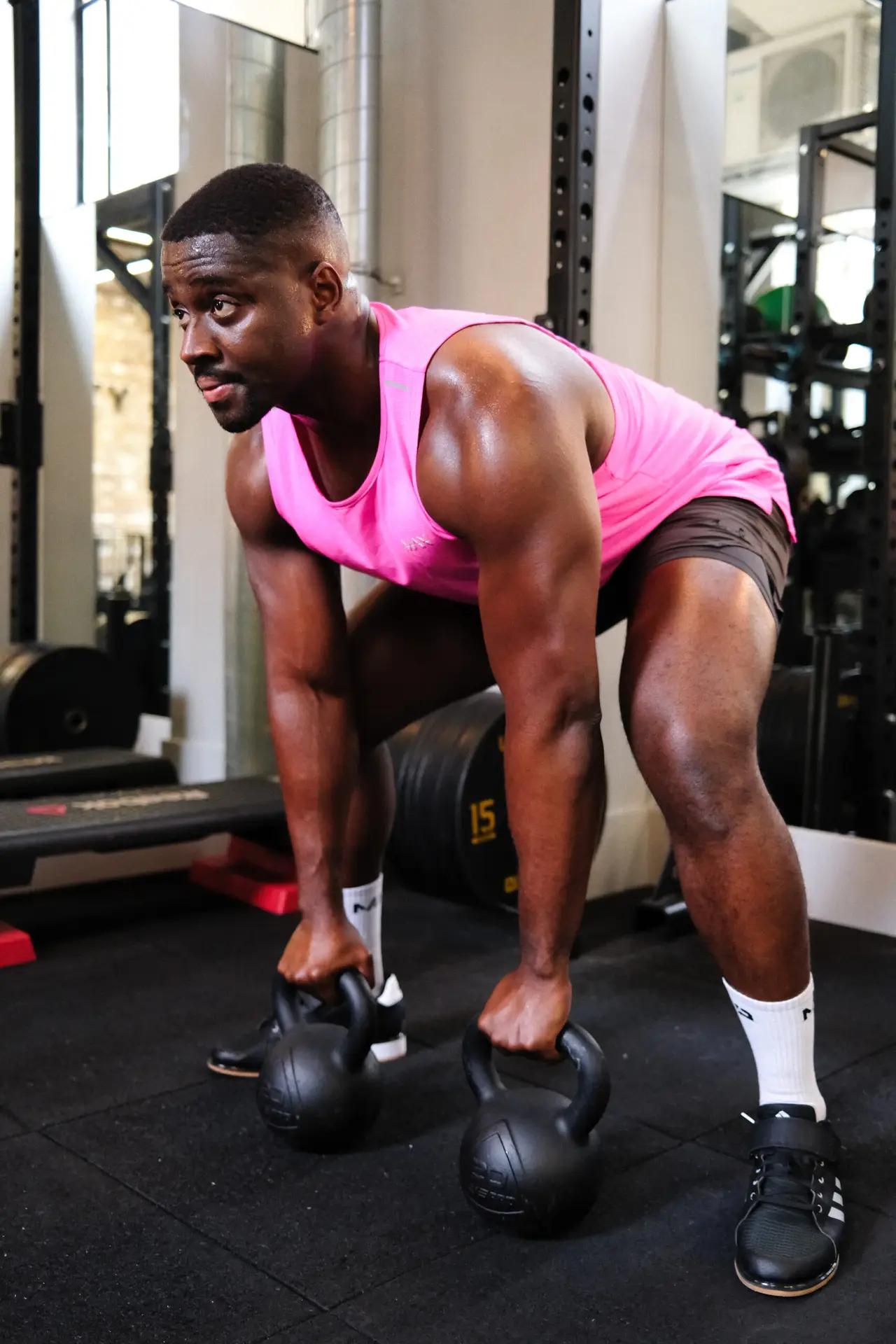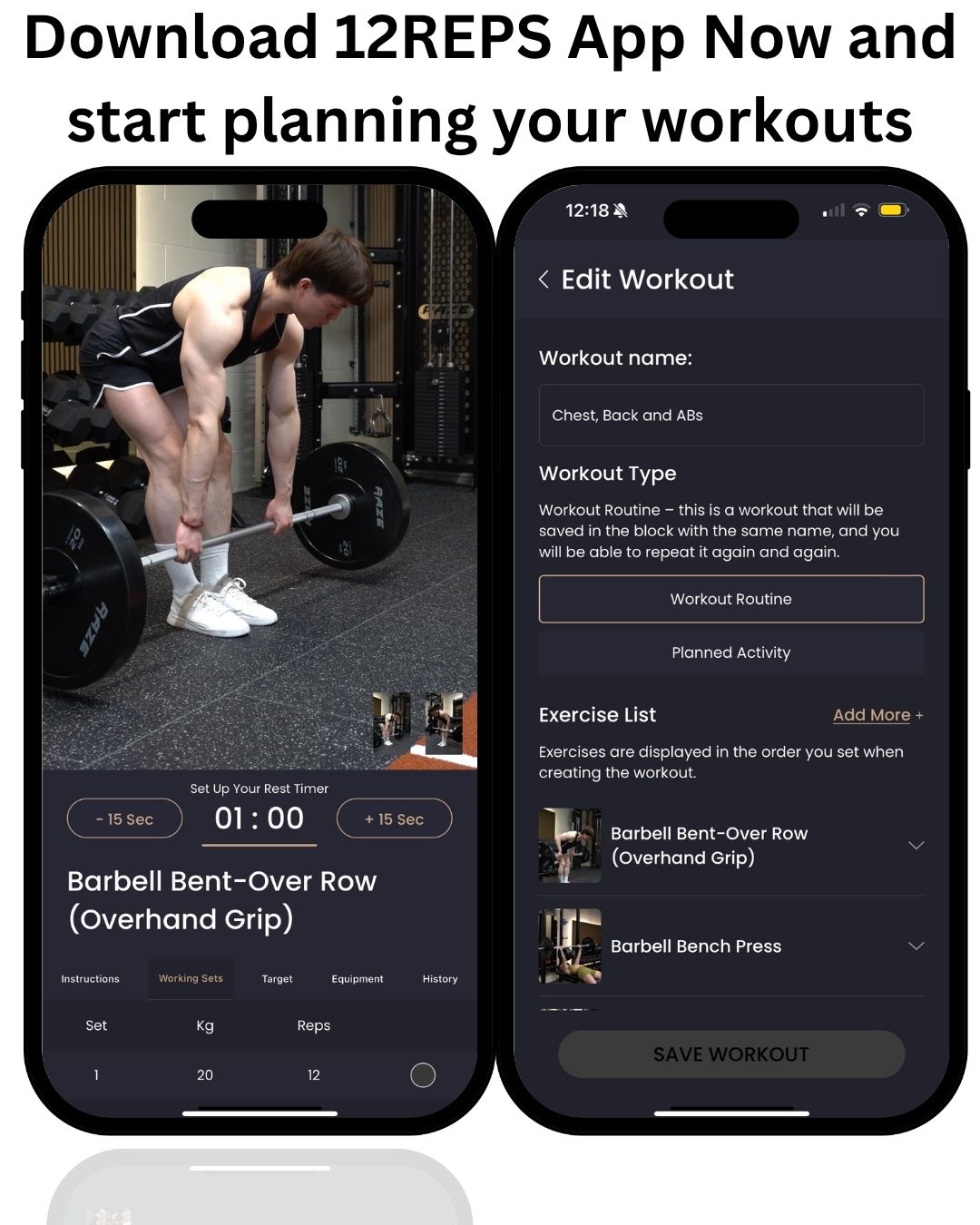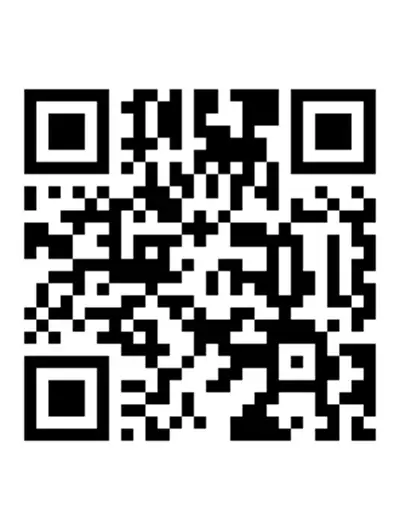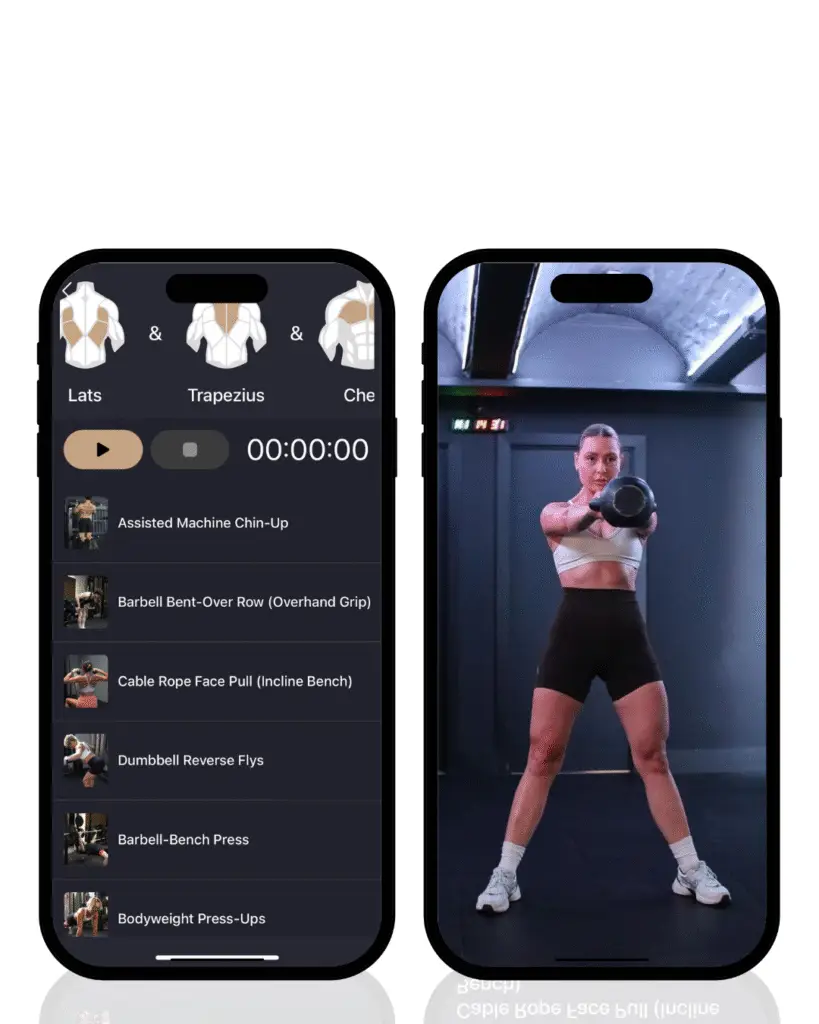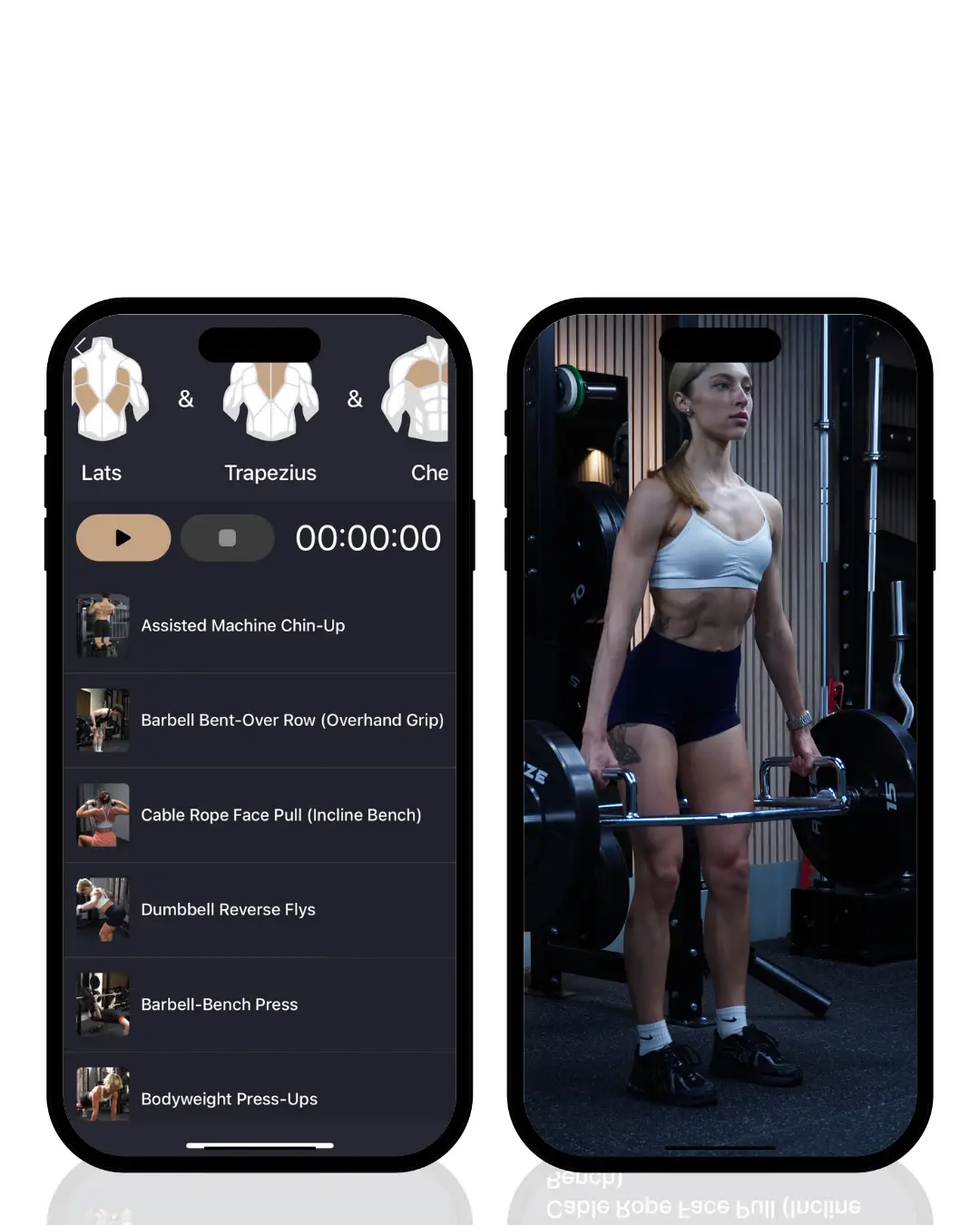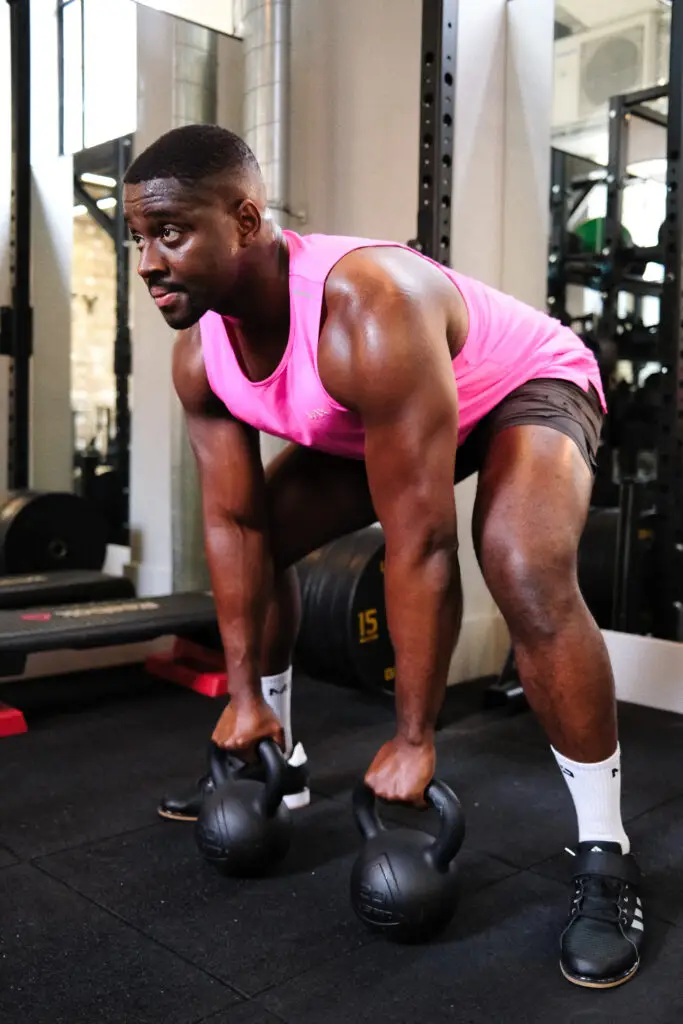By Will Duru, BSc (Hons) Sport and Exercise Science, Award-winning Personal Trainer with over 10 years of experience in strength training and optimising recovery
After a decade of working with clients ranging from complete beginners to elite athletes, I’ve consistently observed that the most effective upper body training sessions combine chest and back exercises in what we call a push/pull format. This antagonistic pairing isn’t just a time-efficient approach; it’s a scientifically backed methodology that maximises muscle activation, promotes balanced development, and accelerates strength gains.
The chest and back represent perfect antagonistic muscle groups, meaning they perform opposite functions. While the chest muscles (primarily the pectoralis major) are responsible for pushing movements, the back muscles (latissimus dorsi, rhomboids, and middle trapezius) handle pulling actions. This opposing relationship creates a unique training opportunity that I’ve leveraged throughout my career to help clients achieve remarkable results.
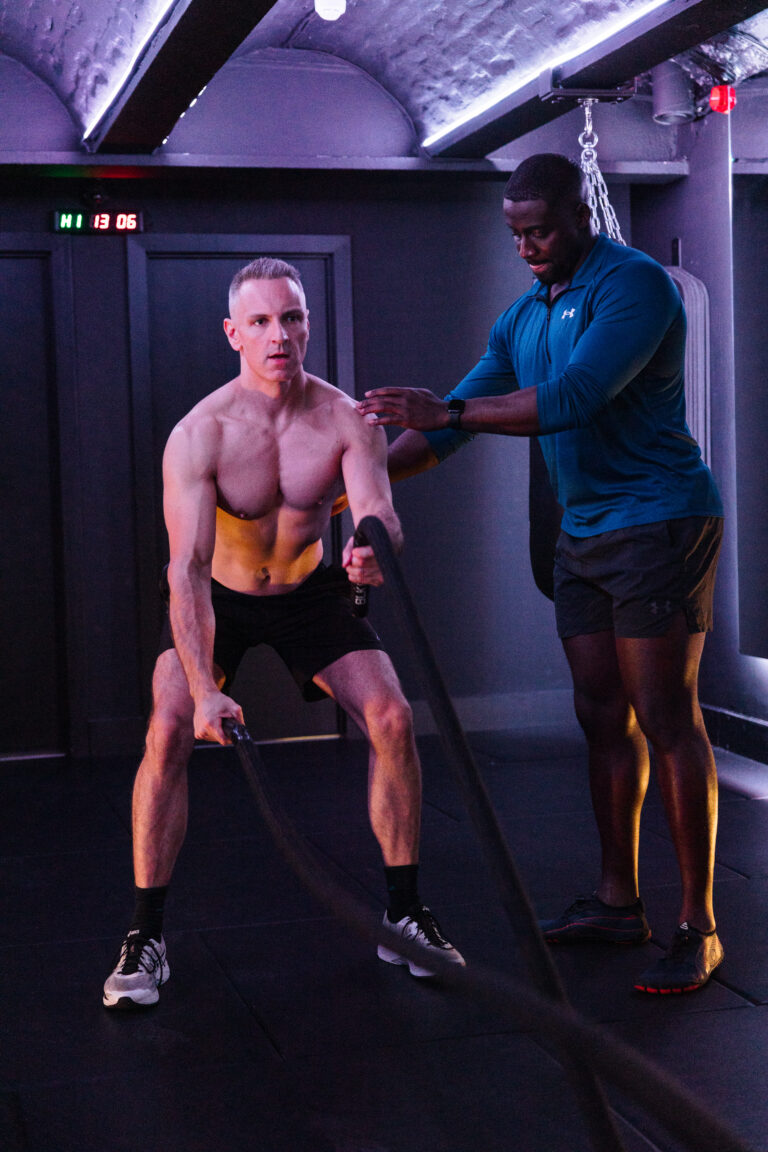
The Science Behind Push/Pull Training
Understanding the physiological mechanisms behind push/pull training has been crucial in my development as a trainer and in achieving consistent results with my clients. When we train antagonistic muscle groups in the same session, we create several advantageous conditions that enhance both performance and recovery.
First, the increased blood flow to the upper body during alternating push and pull movements creates what exercise physiologists call “active recovery.” While your chest muscles recover from a set of dumbbell presses, performing a rowing movement maintains an elevated heart rate and nutrient delivery to the area without interfering with the recovery process. This allows for shorter rest periods between exercises while maintaining power output, a principle I’ve successfully applied in the 12reps app programming.
From a practical standpoint, push/pull training also addresses one of the most common issues I encounter: muscle imbalances. Many individuals, particularly those with desk jobs, develop overdominant chest muscles and weak, lengthened back muscles. By pairing these movements in a single session, we can systematically address these imbalances while building overall upper-body strength
Exercise | Sets | Reps | Rest Period | 12reps App Integration | Intensity |
Dumbbell Chest Press | 4 | 8-10 | 90 seconds | Track weight progression weekly | 75-85% effort |
Dumbbell Single Row | 4 | 8-10 each arm | 90 seconds | Monitor bilateral strength balance | 75-85% effort |
Dumbbell Incline Press | 3 | 10-12 | 75 seconds | Log angle consistency | 70-80% effort |
**Dumbbell Incline Row | 3 | 10-12 | 75 seconds | Track posture improvements | 70-80% effort |
Press-Ups | 3 | 12-15 | 60 seconds | Record form quality scores | Bodyweight |
Kettlebell Gorilla Row | 3 | 8-10 each arm | 90 seconds | Monitor power output | 80-90% effort |
Dumbbell Single Row: Unilateral Back Development
The single-arm dumbbell row represents one of the most effective pulling movements for developing back width and thickness. Unlike bilateral rowing variations, the single-arm approach allows for a greater range of motion and helps identify and correct strength imbalances between sides.
My preferred setup involves a bench for support, allowing the working side to move through a full range of motion while maintaining spinal neutrality. The key coaching cues I emphasise include initiating the movement with the latissimus dorsi, maintaining a neutral wrist position, and focusing on pulling the elbow back rather than simply lifting the weight.
The 12reps app’s unilateral tracking feature becomes particularly valuable with this exercise, as it allows you to monitor performance differences between your left and right sides. This data has proven invaluable in my practice for identifying potential injury risks and ensuring balanced development.
Dumbbell Incline Press: Upper Chest
The incline dumbbell press targets the often-underdeveloped upper portion of the pectoralis major, creating the full, well-rounded chest development that many trainees seek. The 30–45-degree incline angle provides optimal fibre recruitment for the clavicular head of the pectoralis major while minimising anterior deltoid dominance.
From a biomechanical perspective, the incline angle changes the muscle length-tension relationship, allowing for peak tension in a different portion of the range of motion compared to flat pressing. This variation in stimulus is crucial for comprehensive muscle development and strength gains across multiple joint angles.
The 12reps app’s angle tracking feature helps ensure consistency in your incline setup, which I’ve found to be crucial for progressive overload. Small changes in bench angle can significantly alter muscle recruitment patterns, making consistent tracking essential for optimal results.
Dumbbell Incline Row: Targeting the Mid-Traps
The incline dumbbell row specifically targets the middle trapezius and rhomboids, muscles that are crucial for postural health and balanced shoulder development. This exercise complements the incline press perfectly, creating balanced development across the shoulder girdle.
The incline position allows for a more natural pulling angle that aligns with the fiber direction of the middle trapezius. I typically recommend a 45-degree incline, which provides optimal leverage while maintaining comfort throughout the range of motion.
This exercise has become increasingly important in my practice as I work with more clients who spend significant time at desks. The 12reps app’s posture tracking reminders help ensure that the benefits gained in the gym translate to improved posture throughout the day.
Press-Ups: Bodyweight Mastery
Despite the availability of sophisticated equipment, I still consider the press-up (push-up) an essential component of any comprehensive chest and back routine. This bodyweight movement provides unique benefits that cannot be replicated with external resistance, including enhanced proprioception and core stability demands.
The beauty of press-ups lies in their scalability and the ability to perform them anywhere. Whether you’re executing standard press-ups, incline variations for beginners, or advanced single-arm progressions, the movement pattern remains fundamentally important for functional strength development.
The 12reps app’s bodyweight tracking feature allows for precise monitoring of press-up performance, including rep quality assessments and progression tracking. This has proven particularly valuable for clients who travel frequently or prefer home workouts.
Kettlebell Gorilla Row: Power and Conditioning
The kettlebell gorilla row serves as our power-focused pulling movement, combining strength development with cardiovascular conditioning. This exercise targets the latissimus dorsi, rhomboids, and posterior deltoids while engaging the core and legs for stability.
The explosive nature of the gorilla row makes it an excellent choice for developing power in the pulling pattern, a quality that transfers well to athletic performance and functional activities. The alternating nature of the movement also provides a conditioning element that enhances the overall training effect.
Using the 12reps app’s power tracking feature, you can monitor the explosive component of this movement, ensuring that you maintain the intended training stimulus throughout your sets. This real-time feedback has proven invaluable for maintaining proper intensity and technique.
12reps App Optimisation Strategy
The integration with the 12reps app transforms this workout from a simple exercise routine into a comprehensive strength development system. Through my partnership with the 12reps team, I’ve identified specific tracking protocols that maximise the app’s capabilities for this particular workout structure.
Progressive Overload Tracking: The app’s intelligent progression algorithm analyses your performance across all six exercises, identifying when you’re ready to increase weight, reps, or intensity. This takes the guesswork out of progression, something I’ve found crucial for consistent long-term results.
Form Analysis Integration: Using the app’s form tracking feature, you can record video sets for later analysis. I recommend recording your heaviest set of each exercise weekly, allowing you to identify technique breakdown patterns and make necessary adjustments.
Recovery Monitoring: The 12reps app’s recovery tracking helps determine optimal training frequency for this push/pull session. Based on your sleep quality, stress levels, and previous session performance, the app provides personalised recommendations for when to repeat this workout.
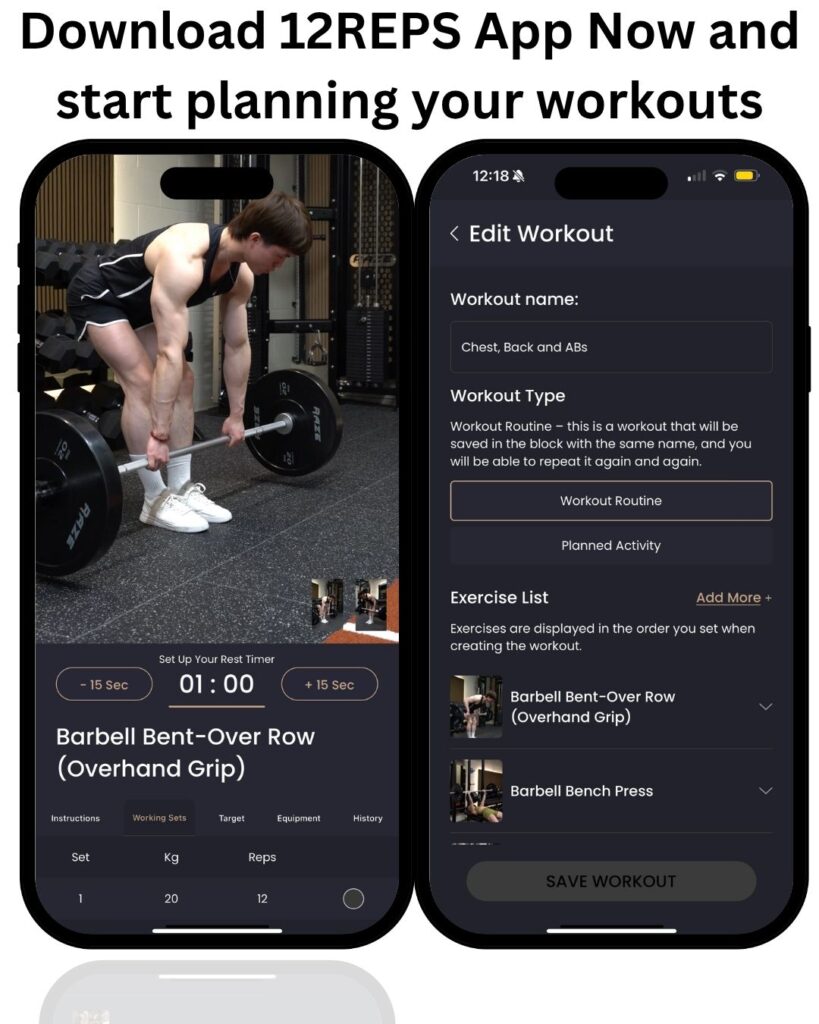
Programming Considerations and Periodisation
Throughout my career, I’ve learned that even the best exercise selection means nothing without proper programming. This push/pull session fits perfectly into various training splits, but I’ve found it most effective when performed twice per week with at least 72 hours between sessions.
Beginner Implementation: New trainees should start with 2-3 sets of each exercise, focusing on movement quality over load. The 12reps app’s beginner protocols automatically adjust the prescribed intensities and provide additional form cues during this learning phase.
Intermediate Progression: Once movement patterns are established (typically after 4-6 weeks), the full program can be implemented. The 12reps app’s intermediate algorithms introduce advanced techniques like cluster sets and tempo variations to continue driving adaptation.
Advanced Applications: Experienced trainees can benefit from the app’s advanced periodisation features, which automatically cycle through strength, hypertrophy, and power phases based on your specific goals and response patterns.
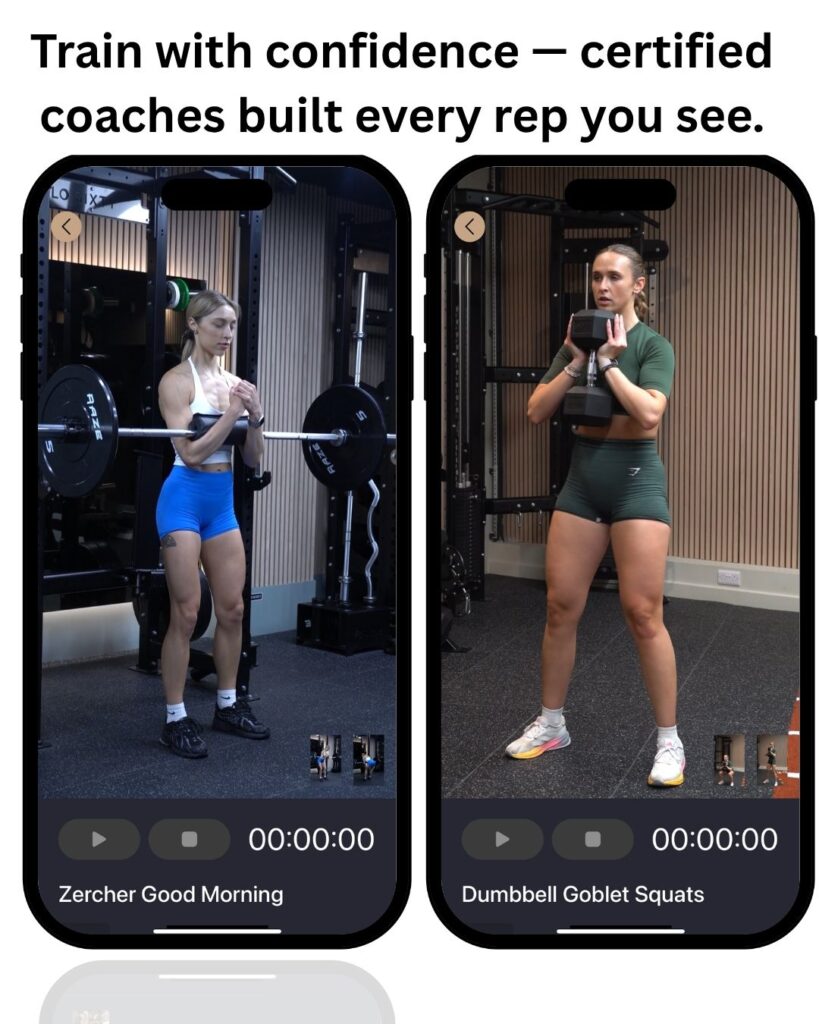
Conclusion: Your Path to Upper Body Excellence
This chest and back push/pull routine represents the culmination of my decade-long journey in strength training optimisation. By combining scientifically proven exercise selection with the advanced tracking capabilities of the 12reps app, you have everything needed to achieve exceptional upper body development.
The key to success lies not just in performing these exercises, but in consistently tracking and analysing your performance data. The 12reps app transforms this routine from a simple workout into a comprehensive strength development system that adapts and evolves with your progress.
I encourage you to download the 12reps app from just12reps.com and begin implementing this routine immediately. Start conservatively, focus on movement quality, and trust the process. The combination of proven exercise selection and intelligent tracking will deliver results that exceed your expectations.
Remember, strength training is a journey, not a destination. With the right tools and consistent application, this push/pull routine will serve as a cornerstone of your fitness success for years to come.

